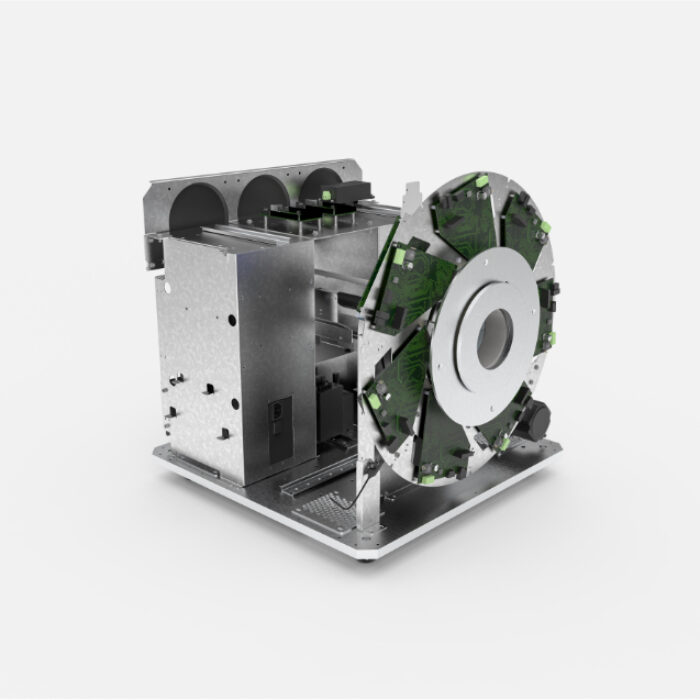A Putative Single-Photon Emission CT Imaging Tracer for Erythropoietin-Producing Hepatocellular A2 Receptor
In this study by Furukawa et al., the γ-CUBE and X-CUBE were used as a non-invasive tool to evaluate and visualize a potential EphA2 receptor-specific SPECT imaging tracer. The CUBES allowed in vivo evaluation of a diagnostic tracer through SPECT/CT imaging.
Research question
Erythropoietin-producing hepatocellular (Eph) receptors are receptor tyrosine kinases involved in cell−cell contact. The subgroup of EphA2 receptors is associated with cancer proliferation and migration. The EphA2 receptor was found notably overexpressed in cancer cells compared to normal cells and is also involved in cell migration when introduced into non-expressing cancer cells. Therefore, EphA2 receptor imaging has the potential for cancer diagnosis. The study aimed to develop a small molecule SPECT imaging tracer for EphA2 receptor. A SPECT tracer was chosen due to its high clinical versatility and widespread use as a non-invasive imaging technique.
Experiment
N-(5-((4-((4-ethylpiperazin-1-yl)methyl)-3-(trifluoromethyl)-phenyl)carbamoyl)-2-methylphenyl)-5-[123I] iodonicotinamide ([123I]ETB) was synthesized and evaluated as an imaging tracer for SPECT imaging of the EphA2 receptor. [123I]ETB was designed based on ALW-II-41-27, an inhibitor of EphA2 receptor kinase. Nonradioactive ETB was also synthesized, and inhibition efficiency of EphA2 receptor kinase activity was also assessed via an inhibition assay. In addition, [123I]ETB uptake in tumors was visualized via SPECT/CT imaging. Given the longer half-life of I-125, I-125 was used for the ex vivo biodistribution studies instead of I-123. A cell-binding assay was performed to demonstrate the binding of [I-125] to the EphA2 receptor. For the in vitro and ex vivo evaluation of [125I]ETB, the EphA2 receptor-positive U87MG cell line was used.
Results
An ALW-II-41- 27 derivative has been designed and synthesized that can be labeled with gamma-emitting I-123, [123I]ETB, aiming toward the development of a potential SPECT imaging tracer targeting EphA2 receptors in vivo. Nonradioactive ETB has been shown to inhibit EphA2 receptor kinase activity in vitro efficiently (IC50: ETB, 90.2 ± 18.9 nM) as efficiently as its parent ALW-II-41-27. The cell binding assay in vitro demonstrated the specific binding of [125I]ETB to the EphA2 receptor. Ex vivo biodistribution studies showed that [125I]ETB is taken up by the tumor, while SPECT/CT imaging using [123I]ETB confirmed ex vivo biodistribution data with a clear delineation of U87MG tumors. Furthermore, following the ex vivo distribution data, a high accumulation of [123I]ETB in the kidney was also observed via SPECT/CT imaging.
Based on the above, [123I]ETB can be considered a potential SPECT imaging tracer for the EphA2 receptor and can be further investigated for its potential as a diagnostic tracer for EphA2 receptor-rich malignancies. Visualizing and quantifying the distribution and density of the EphA2 receptor in tumors could provide useful information for diagnosing cancer, which in turn can contribute to the development of therapeutic drugs.

